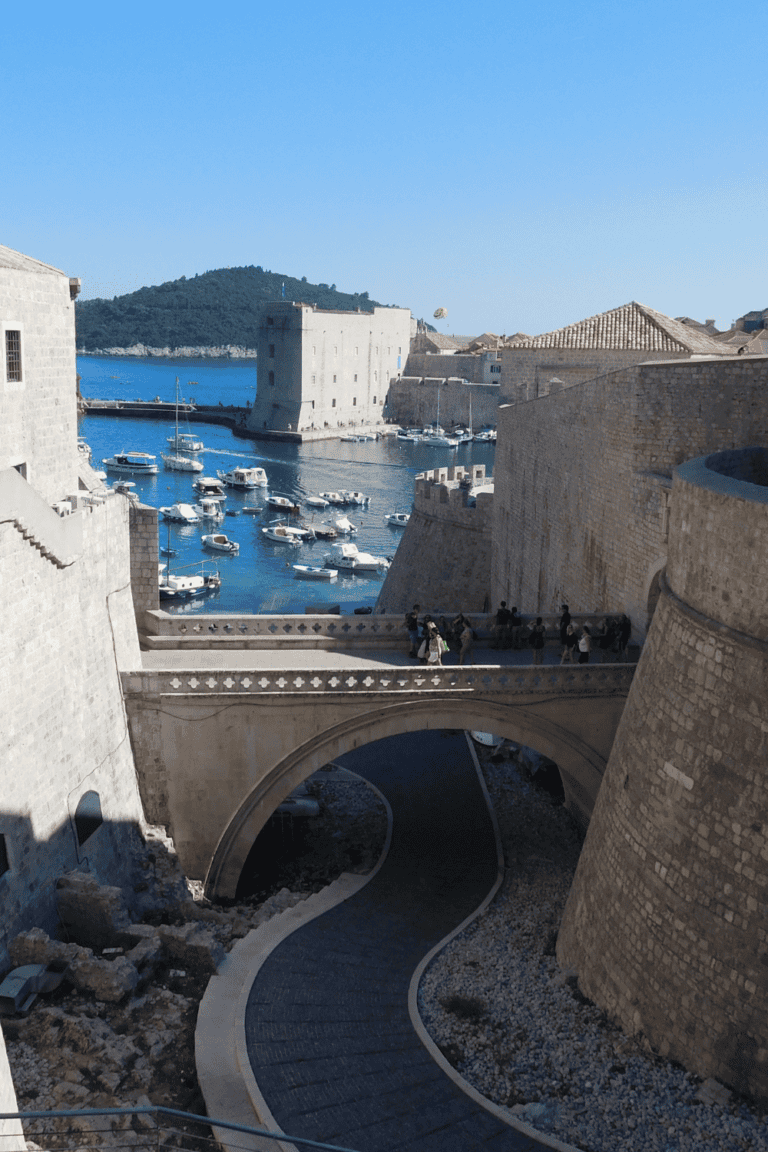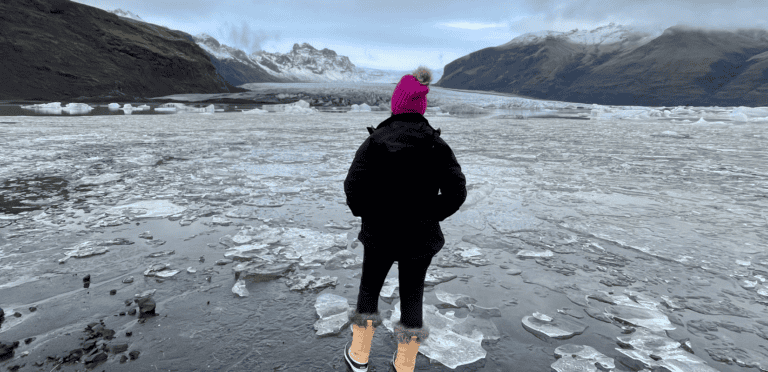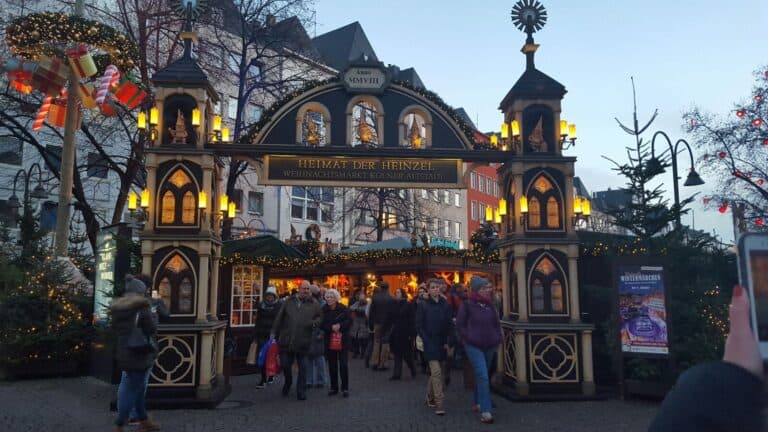7 Waterfalls in Southern Iceland To Add To Your Bucket List
Southern Iceland is an area filled with natural beauty, and its waterfalls are some of the most stunning sights in the country.
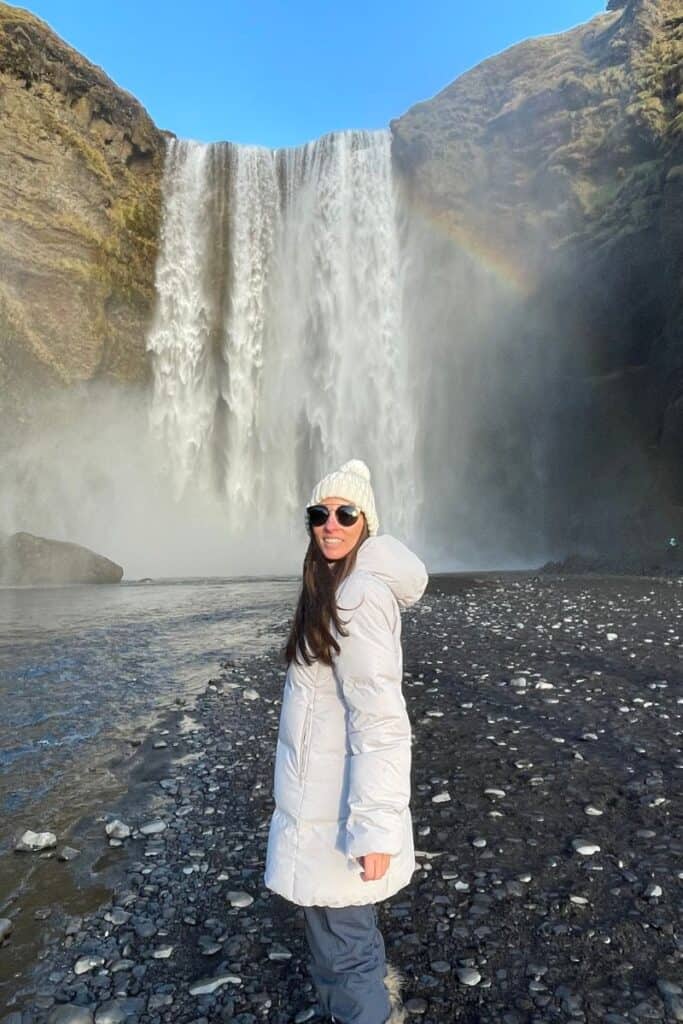
Known for its glaciers, volcanoes, and beautiful landscapes, the southern part of Iceland has many waterfalls that you need to include on your itinerary.
Iceland has over 10,000 waterfalls, thanks to its glaciers, mountains, and rivers.
While many of these waterfalls are small and unnamed, hundreds are well-known and frequently visited by travelers.
One of the main reasons I fell in love with Iceland is its waterfalls and the deep connection to nature they make you feel.
A fun part about driving around Iceland is that you can spot a waterfall far in the mountains at any time.
The best part? Many of these waterfalls are easily accessible, making them perfect for a road trip.
This guide is all about seven of the best waterfalls in Southern Iceland and tips to make the most of your visit.
1. Gullfoss
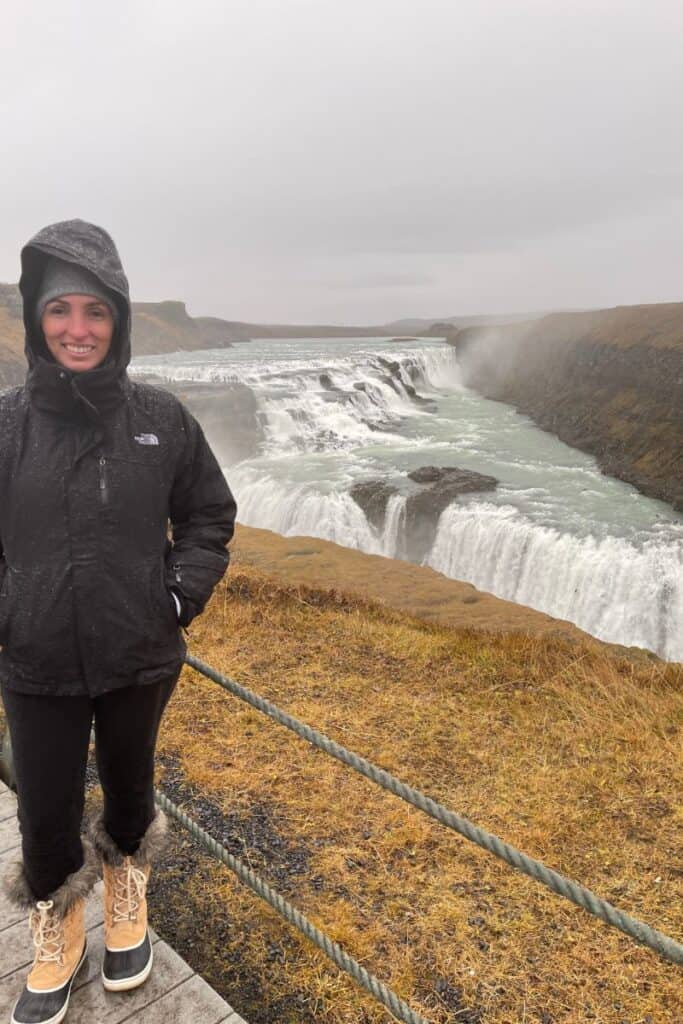
Gullfoss, or the “Golden Falls,” is one of Iceland’s most iconic waterfalls.
Located on the Hvítá River, this two-tiered waterfall plunges into a dramatic canyon, creating an awe-inspiring spectacle.
On sunny days, you might even spot a rainbow forming in the mist.
On the day I visited Gullfoss, it rained nonstop, yet the waterfall still felt incredibly powerful and impressive.
If you visit on a rainy day, don’t let the rain stop you, it’s worth the visit.
Gullfoss is part of the famous Golden Circle route, making it a must-visit for anyone exploring Southern Iceland.
How to Get There
Gullfoss is about a 1.5-hour drive from Reykjavík. Take Route 1 (the Ring Road) to Route 35, also known as the Golden Circle Road.
The drive is straightforward, with plenty of signage along the way.
There is a large parking area near the waterfall, and the site is well-maintained with viewing platforms and walking paths.
Tip:
When raining or snowing be cautious while walking around, as the paths can become quite slippery.
2. Öxarárfoss
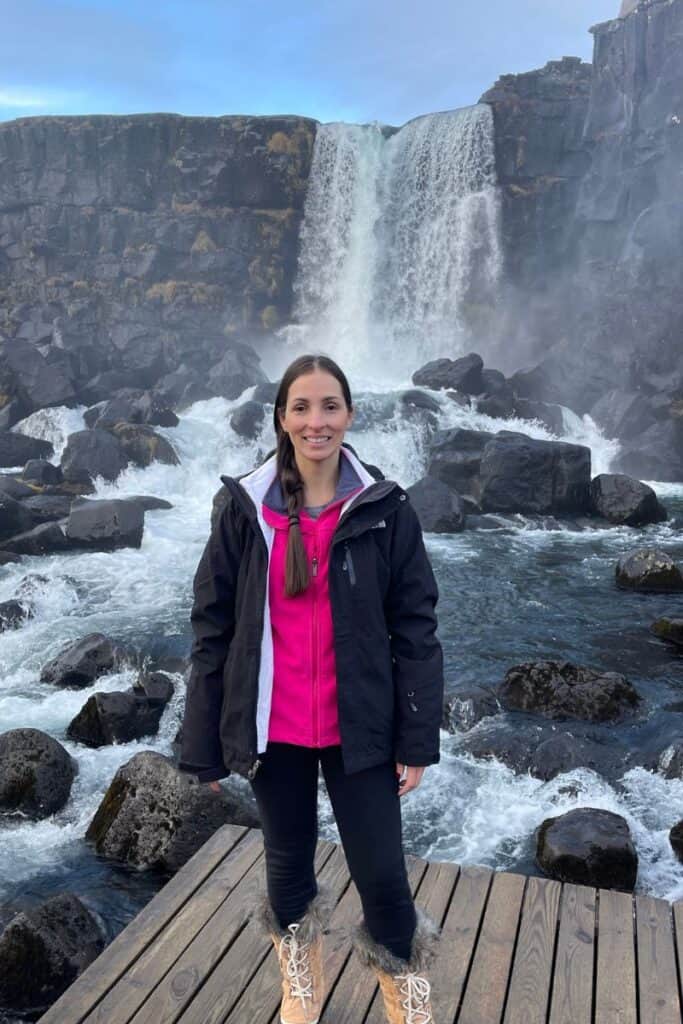
Öxarárfoss is a smaller waterfall located within the stunning Þingvellir National Park, a UNESCO World Heritage Site.
Though not as towering as other Icelandic waterfalls, its serene beauty and historical surroundings make it a must-see.
The water tumbles over black volcanic rocks, creating a tranquil setting that feels like stepping into another world.
One of the highlights of visiting this waterfall is walking in the rift valley where the Eurasian and North American tectonic plates meet.
How to Get THERE
Öxarárfoss is easily accessible within Þingvellir National Park, which is part of the popular Golden Circle route.
From Reykjavík, the park is around a 45-minute drive along Route 1 and Route 36.
Once you arrive, the waterfall is a short, well-marked 10–15 minute walk from the main visitor parking lot.
The trail is relatively flat and easy to navigate, making it suitable for all visitors.
3. Faxifoss
Faxifoss, also known as Faxi, is a lesser-known waterfall located on the Tungufljót River.
Unlike some of the larger waterfalls, Faxifoss has a more tranquil vibe, making it a perfect spot for a picnic or a peaceful break.
Its wide cascade is particularly picturesque, and there’s even a salmon ladder built into the falls to help fish navigate upstream.
How to Get There
Faxifoss is about 12 kilometers from Gullfoss, making it a convenient stop along the Golden Circle.
From Route 35, take a short detour to Route 355, and you’ll reach Faxifoss in just a few minutes.
There is a small parking lot nearby, and the waterfall is easily accessible.
Tip:
Bring a camera with a wide-angle lens to capture the full width of the cascade. The area is less crowded, so you’ll have plenty of time to take photos.
4. Seljalandsfoss
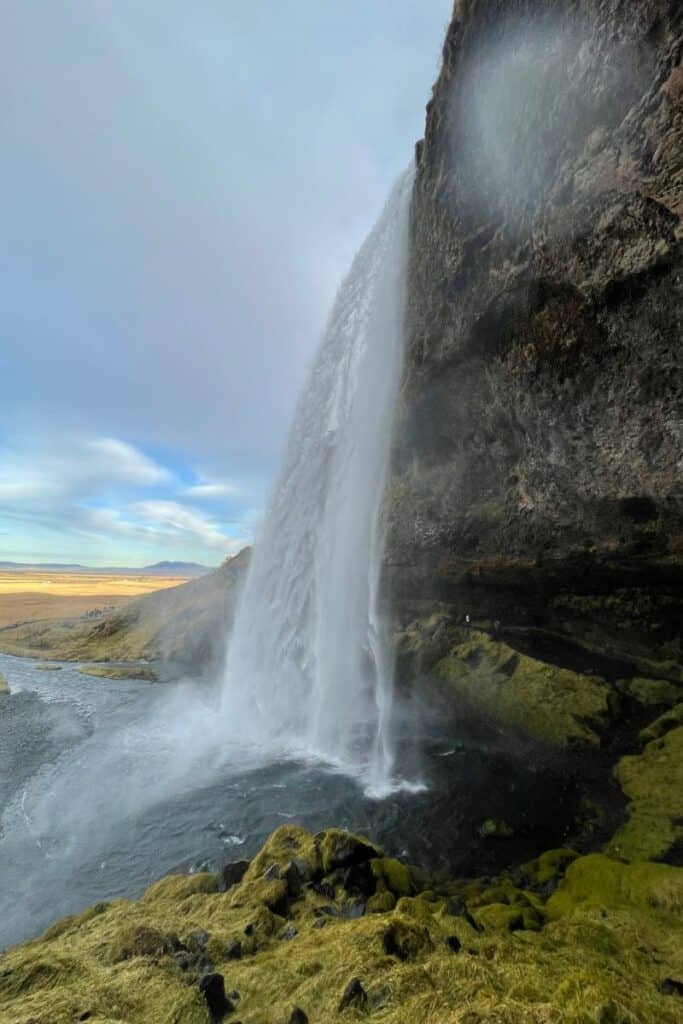
Seljalandsfoss is one of Iceland’s most famous waterfalls, and for good reason.
This tall, narrow cascade drops 60 meters over a cliff into a small pool below.
What makes Seljalandsfoss truly unique is that you can walk behind the waterfall, offering a one-of-a-kind perspective and incredible photo opportunities.
Walking behind the waterfall is a once-in-a-lifetime experience—the roar is so loud that you can barely hear the person next to you.
The waterfall is part of the Seljalands River, which originates from the glacier-capped Eyjafjallajökull volcano.
The combination of water, cliffs, and surrounding greenery creates a magical atmosphere.
Another cool thing about this waterfall is that you can feel its sheer power from the moment you step out of the car.
How to Get There
Seljalandsfoss is located right off the Ring Road (Route 1), about a 2-hour drive from Reykjavík.
There is a parking area with a small fee, and the waterfall is just a short walk from the lot.
There are restrooms available, along with spots to grab a snack or a cup of coffee.
Tip:
Wear waterproof clothing if you plan to walk behind the falls, as you’re guaranteed to get wet from the spray!
5. Gljufrabui
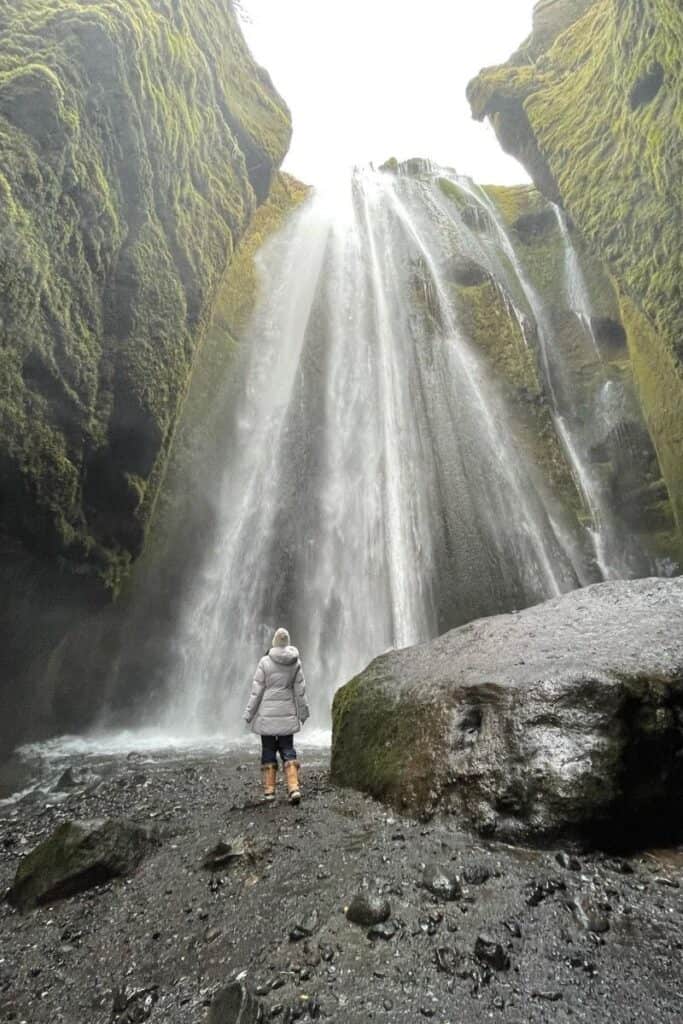
Tucked away in a hidden canyon near Seljalandsfoss, Gljúbrabúi is a true hidden gem.
This lesser-known waterfall is partially concealed by a large rock, creating an enchanting setting.
To see the waterfall up close, you’ll need to go through a shallow stream or step carefully on rocks, but the effort is well worth it.
At first, squeezing through the rocks and stepping into the small stream might feel intimidating, but once you’re standing in front of the waterfall, you won’t regret it.
I feel that this ended up being one of my favorite waterfalls because of the sense of adventure to get in and see it up close.
The name Gljúbrabúi means “Canyon Dweller,” and the secluded location makes it feel like you’ve stumbled upon a secret oasis.
How to Get There
Gljúbrabúi is just a short walk from Seljalandsfoss, making it easy to visit both waterfalls in one trip.
Follow the signs from the Seljalandsfoss parking area to the nearby path that leads to Gljúbrabúi.
I simply followed the crowd heading toward the waterfall and followed their steps carefully to make my way in.
If you’re feeling unsure, wait for someone confident to go in first and follow their lead—it makes the adventure much easier and less intimidating.
Tip:
Wear waterproof boots or shoes with good grip to navigate the stream and slippery rocks.
6. Skógafoss

Skógafoss is one of Iceland’s largest and most powerful waterfalls, with a drop of 60 meters and a width of 25 meters.
The sheer size and thunderous roar of the waterfall is truly mesmerizing.
On sunny days, you’ll often see a rainbow in the mist.
If you think the sun might come out, be patient and wait for it.
When I arrived I didn’t see the rainbow, but once the sun appeared, my photos and videos turned out incredible.
Apart from the main waterfall you can climb a staircase to the top of the waterfall for stunning views of the surrounding landscape.
Climbing the 527 metal stairs to the top seems daunting but trust me it is worth it.
The views from the top are absolutely worth it, but walking along the river in this serene setting was one of the most magical experiences of my trip. It felt like stepping into a scene from The Sound of Music.
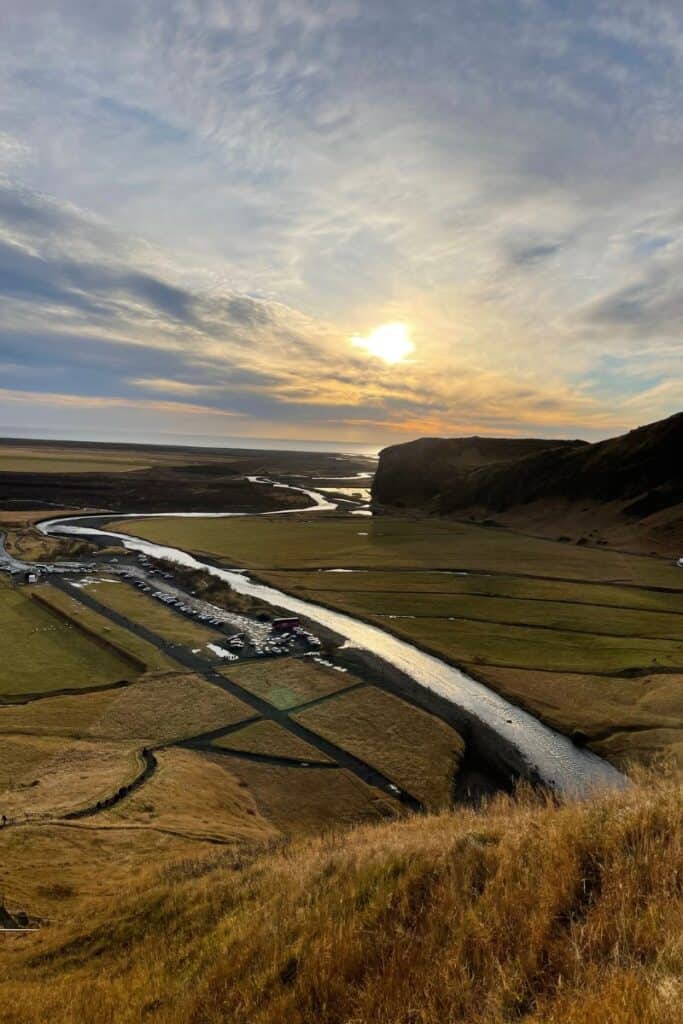
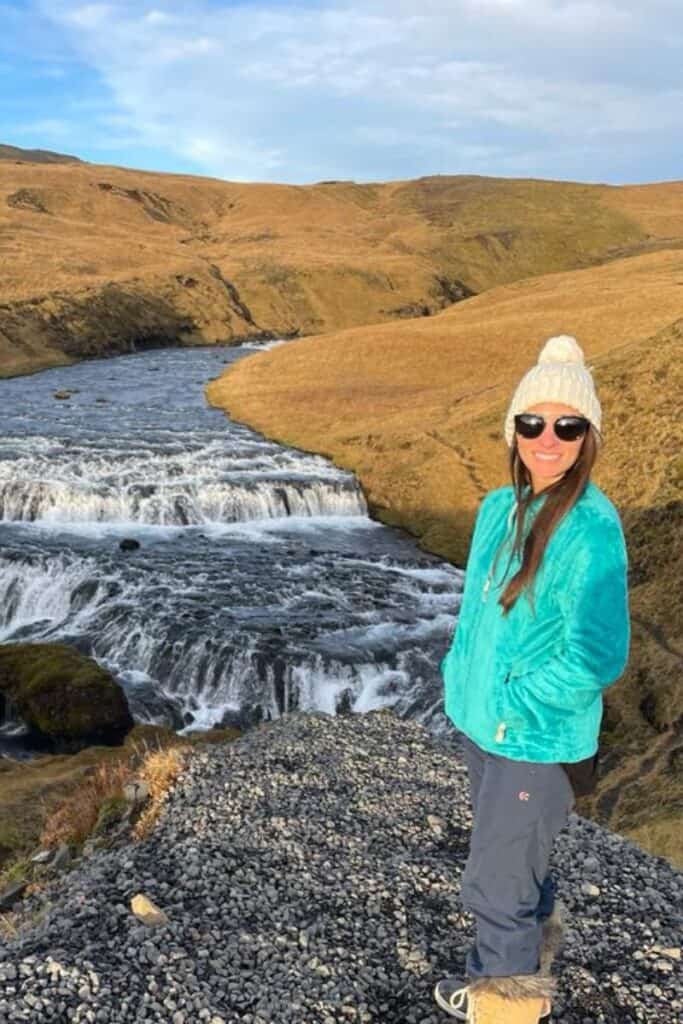
How to Get There
Skógafoss is located right off the Ring Road, about a 2-hour drive from Reykjavík and 30 minutes from Seljalandsfoss.
There is a large parking area, and the waterfall is just a short walk away.
It also has bathrooms and an area to get snacks and soft drinks.
Tip:
If you’re feeling adventurous, continue hiking the trail above the waterfall. It’s the starting point of the famous Fimmvörðuháls hiking trail, which offers incredible views of glaciers and rivers.
7. Fagurhólsmýri

Fagurhólsmýri Waterfall, also known as Foss á Síðu, is a captivating sight in the southern region of Iceland.
This waterfall stands out because it cascades over an unusual rock formation made up of basalt columns.
These columns are a result of volcanic activity, where the lava cooled and cracked in a way that created symmetrical, hexagonal shapes.
The basalt columns along the waterfall give it an almost sculptural appearance, making it look different from many other waterfalls in Iceland.
How to Get THERE
The most convenient way to reach Vatnajökull National Park is by car.
The park is accessible from Route 1, also known as the Ring Road, which loops around Iceland.
If you’re traveling from Reykjavík, the park is about a 4.5-5 hour drive (around 330-350 kilometers) southeast along the Ring Road.
As you drive through the scenic landscape, Foss á Síðu is hard to miss, as it’s visible from the road.
There’s a small parking area nearby, allowing for a quick and easy stop to take in the view and snap some photos.
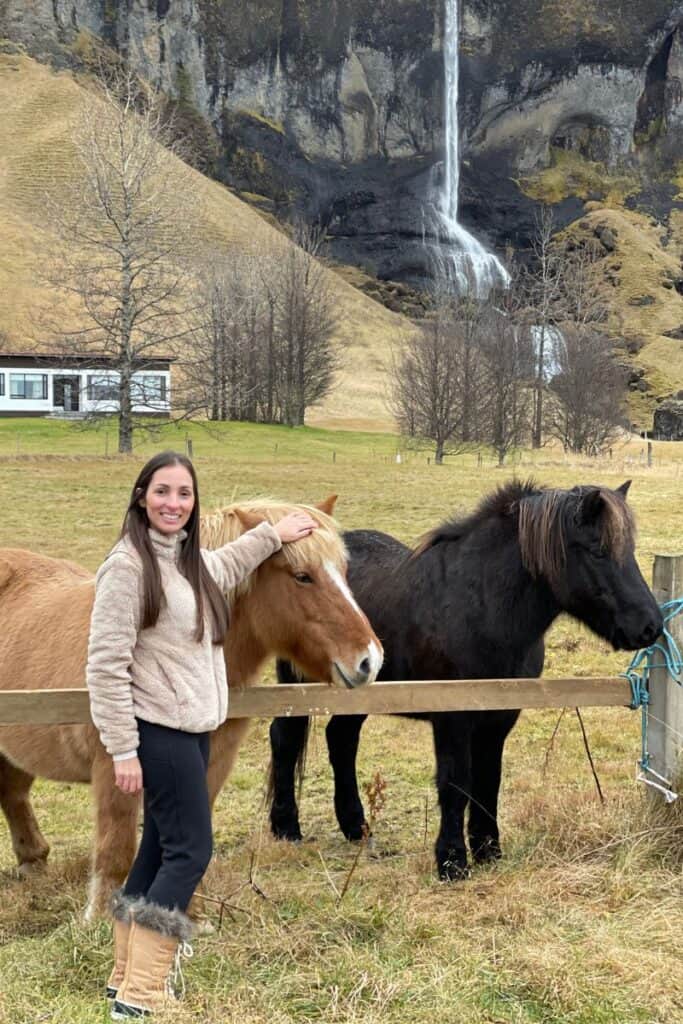
Tips for Visiting Waterfalls in Iceland:
- Dress Warmly: The spray from the waterfalls can make the area chilly, so bring waterproof and windproof clothing.
- Sturdy Shoes: Slippery rocks and uneven paths are common near waterfalls, so wear hiking boots or sturdy shoes.
- Be Prepared for Crowds: Popular waterfalls can get busy, especially during peak tourist seasons. Arrive early or late in the day for a quieter experience.
- Pack Snacks: Some waterfalls are in remote areas with limited food options nearby.
- Respect Nature: Stick to marked paths and avoid disturbing the surrounding environment.
The Magic of Waterfalls in Southern Iceland
Southern Iceland’s waterfalls are some of the most beautiful natural attractions in the world.
From the iconic Gullfoss and Seljalandsfoss to the hidden gem Gljúbrabúi, each waterfall offers a unique experience.
With proper planning and the right gear, your journey to these breathtaking cascades will be unforgettable.
So pack your bags, hit the road, and get ready to be amazed by the beauty of Southern Iceland’s waterfalls.
